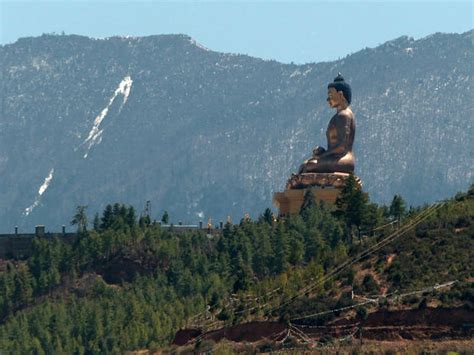Where am I : India Tour Packages » Most Popular Packages » Phobjikha Valley Tour Packages
View Details

Destinations Covered : Pheuntsholing » Thimphu » Punakha » Phobjikha Valley » Paro
Travel to Phobjikha Valley
This beautiful valley is known as Gangtey, named after the Gangtey Math. The monastery, commonly known as Gangte Goenpa, is situated on a hillock in the Phobjikha Valley, which gives you a fantastic view of the Phobjikha Valley. It is the largest Nyingmapa Monastery in western Bhutan and has quarters for monks and a meditation center. It is where the black-necked cranes of Tibet migrate during the winter period. Placed at high altitudes, on the western flank of the Black Mountain, the Phobjikha Valley inherits a cold climate compared to other regions of Bhutan. Discover the famous monastery of Gangtey served by many hiking trails by Travel to Phobjikha Valley.
The bit about Phobjikha Valley
Phobjikha ranks among the important wildlife sanctuaries of Bhutan. The black-necked crane is very atypical for this region. The valley's inhabitants celebrate a festival dedicated to these birds in November. Having become a region's symbol, the black-necked crane, also called Thrung Karm, is now part of the Bhutanese cultural landscape. For the villagers, these birds are messengers from the heavens, a sign of a good harvest for years to come. Phobjikha is a special place in Bhutan because it is one of the few glacial valleys in the country and attracts unique wildlife. In the heart of a setting so exquisite that it seems unreal, the yaks come to taste the dwarf bamboos observed from above by the cranes. Because the Phobjikha valley is also the place of refuge for the rare black-necked cranes. The latter leaves the cold of Tibet each winter to settle in the heart of the hills and thick forests of the region. Hiking is probably the best way to visit the Phobjikha Valley. We thus discover a rare diversity of landscapes, sometimes invaded by trees, sometimes empty and stretching as far as the eye can see.
You can also visit the remote villages of the valley and meet its inhabitants who, still unaccustomed to tourists, are delighted to share their culture with foreigners. From the end of October to the beginning of March, all the inhabitants of the Phobjikha Valley live with their eyes fixed on the sky, patiently waiting for the return of the black-necked cranes. If they are worshiped to this extent, they are considered to be reincarnations of Buddha. Symbol of intelligence and wisdom, their arrival is synonymous with happiness and peace for all the valley's inhabitants. Each year the show is superb and bordering on the mystical. The cranes arrive by the hundreds, circle around the monastery of Gangtey, and then land on the ground. To understand the importance of the black-necked crane for the inhabitants of the Phobjikha valley, do not miss the festivities dedicated to them in November. The region's inhabitants gather around traditional dances and songs for the occasion. Apart from this, tourists passing through the Phobjikha Valley have the opportunity to visit the famous Gangtey Monastery. In this sacred place, the lamas devote themselves to meditation and the practice of Kora. Phobjikha Valley consists of small Gangtey and other villages with nearly 4,716 inhabitants. The locals are from an ancient Tibetan ethnicity and use the Henke dialect. In addition, nomadic herders are known as yak herders who also populate the area. In winter, when snow covers the valley, most of the villagers who reside on high ground move to the Wangdue Phodrang area.
Activities in Phobjikha Valley
Push the door of the monastery of Gangtey
In Gangtey Monastery, you can enter through a large door that opens onto the central courtyard. All around are the dwellings of the monks. It is not uncommon to see religious services or monastic ceremonies. The central tower houses five temples whose carved wooden structures and paintings are magnificent.
View of Phobjikha Valley
Believe me. If you want to go somewhere in Bhutan, you should go to Phobjikha Valley. Here you will not hear the sound of vehicles. Here you will be able to hear nature, the chirping of birds, and see the villages and beautiful mountains. You will stop your car after seeing the view when you pass through the roads here. I am not kidding. I have also tried to stop my taxi on this route 15-20 times. The mountains, greenery, everything is so beautiful that it makes one want to stand and stare at one place.
Camping
Camping is an essential part of an adventure trip. The best way to enjoy a vacation is to sleep under the stars and wake up with the pristine atmosphere around you. In Gangtey Valley, you will find some open space camping areas where you can camp and sleep under the sky. Summer is the best recommended season for an excellent open space camping.
Hike from village to village
You can go for a walk in the valley through pastures covered with dwarf bamboo, tiny temples, and hamlets with pretty carved and painted wooden houses. If you are a nature lover and love walking, this valley is a good place. There are so many things to see here that you must trek for a long time to reach. You must stay in this valley for a day or two. You can trek here in search of new places. You can understand the culture if you do not want to do it here. The best way to do this is to talk to the people here. You can learn about his daily life and routine here.
Go to Wangdu
Another important thing is that many people who go to Phobjikha Valley stop at Wangdue Daejong. Wangdue is home to monasteries, with more than 200 monks living in the monastery. This monastery also has a wooden roof. Its architecture is Bhutan's dzong style, which is a beautiful quality piece. You can come to the monasteries here. One can see the traditional prayer and tradition here. Believe me. You will not be able to forget this place if you come here.
Take tea with a village family.
We invite you to a beautiful moment of sharing on a farm in the region. A family opens the doors of their home to you and invites you to discover Bhutanese interiors while enjoying yak butter tea.
Observe black-necked cranes
From November to February, the black-necked cranes revered by Buddhists come from Tibet to take up winter quarters in this valley.
You can observe them warm at the study center established by the Royal Society for the Protection of Nature. Telescopes are available there, but a wealth of information is devoted to these haughty birds.
Hike and Trek
This is the best thing to do for an adventure lover in Phobjikha Valley. The summer is a beautiful time to explore the valley by trekking in the bright and lush scenery with beautiful flowers, grass, and trees. You can explore plenty of trails in Gangtey Valley, with the Gangtey Nature Trail being the most popular hiking trail.
Food of Phobjikha Valley
You will easily find delicious food made in hotels and homes here. Apart from this, there are also a couple of food stalls and restaurants. You must try the local food Ema Datshi and Keva Datshi here. Apart from this, you will also easily find Butter Tea and Ara local liquor. There are some stalls near Gangti Math. Where they sell fruits and vegetables. Momos and local Bhutanese food are available in the villages here.
What to see in the Phobjikha Valley?
A beautiful bowl-shaped glacial valley set against the backdrop of the Black Mountains, the Phobjikha Valley in Bhutan is for those who have a deep love for nature. It is a small town in the central part of Bhutan. Like many other beautiful places to see in Bhutan, Phobjikha is riddled with valleys and is surrounded by mountains and lush greenery, making it one of the top attractions in Bhutan. The place is known for its beautiful scenery and passes, and a day hike will take you through the city and the forest. The Phobjikha valley has an elevation of about 3,000 meters. The place is bowl-shaped and on the western slopes of the mountains. The place is on the border of Jigme Singye Wangchuck National Park. If you are visiting Bhutan, this is the most famous place, and you must visit this place. Experience the large flock of Black Necked Cranes in the winter, and as it is next to the crucial wildlife sanctuary in the country, you may also see some deer barking nearby or hear their voice. To add to your excitement, you should know that there are leopards, warthogs, red foxes, Himalayan black bears, and many other species in the forest.
Gangtey Monastery
If you come to Phobjikha Valley, go to see Gangteng Monastery here. This monastery was built in 1613 by the people here. This monastery was built from the wood and stones of the trees here. These stones were taken from the hill here. The structure of this monastery is magnificent. You will feel at peace when you come here. This 17th-century monastery stands on top of a hill in the Phobjikha Valley. It is a temple of great cultural and religious importance. Gangtey Monastery attracts many tourists and clerics every year.
The black-necked cranes of Phobjikha
The Royal Society of Bhutan for the Protection of Nature RSPN has been raising awareness in the community to turn the valley into a nationally-protected area due to its large population of black-necked cranes. The RSPN lists nearly 550 cranes in Phobjikha, which has been steadily increasing since the 1990s. The valley is thus a favorite ground for bird watchers. The black-necked crane is a rare bird endemic to the Himalayas. Classified today as a vulnerable species on the IUCN Red List, the crane has become an iconic and expected animal in Bhutan. Bhutan is delighted to see these birds arriving in its valleys every year in the fall. They migrate from Tibet to take refuge in the winter in the warmer valleys. Their appearance generally coincides with the end of the harvest season and provides an opportunity to celebrate the harvest. It is said that these majestic birds would circle Gangtey Monastery three times to honor the place and ask for protection during their stay in the Phobjikha Valley. Currently, the valley is moving more and more towards ecotourism. Bhutan is doing everything necessary to encourage the return of the cranes. 300 to 500 birds are expected each winter. For this, observation towers have been set up far from the habitats of the crane so as not to disturb them. Farmers are advised to replace barbed wire fences with wooden or stone barriers to reduce bird damage.
Fauna and flora
Phobjikha engulfs in its beautiful landscapes and remarkable faunal biodiversity. Besides the black-necked crane, 13 endangered bird species are found here. It is also home to wild boars, Himalayan black bears, and leopards. In terms of flora, Phobjikha comprises marshy terrain with grassy pastures. The abundant dwarf bamboos mainly attract black-necked cranes. These plants feed the birds in winter and act as a natural barrier to the marshy paths of the valley in summer. Other tree species include blue pine, birch, maple, and rhododendrons. Potatoes are the main cash crop for the inhabitants of the valley.
Black-necked Crane Information Center
The Black-necked Crane Information Center is conveniently located in the Phobjikha Valley, a protected area for black cranes. This critical center brings to light all the secrets of this endemic bird of the Himalayas. For ornithology enthusiasts, this is an opportunity to discover this rare species and observe its behavior. The Black-necked Crane Information Center is located at the edge of the forest and wetland along the main road in the Phobjikha Valley. Considered an obligatory stop during a stay in Phobjikha, the center presents itself as a natural source of information on the black crane, now considered a vulnerable species. The center records several educational and recreational programs that are revealed in the form of exhibitions and videos. You will be able to learn more about the valley's environment, the cultural and social context, the natural resources, and the ecological importance relating mainly to the wetland and the black-necked cranes. For groups of students, the center has set up some educational activities to raise the youngest's awareness about environmental issues and the dangers of extinction that cranes can incur.The center of the black-necked crane is also a place of recreation. Equipped with telescopes and binoculars, you can take advantage of the fabulous viewpoint to try to see and observe these endemic Himalayan birds.
Rural Lifestyle
This is the best way to enjoy traveling to mingle with the locals. The people here follow a semi-nomadic way of life. People migrate to lower places during winter and take their cows and yaks with them. During the summer, people return to their village. The rural lifestyle of Bhutan is very serene and charming to enjoy and explore the rural insights of the country.
Gangtee Valley
Even if you do not do anything in this valley, it is wonderful because even if you do nothing, the spectacular, beautiful, and colorful views here will make you go crazy. When I reached here, this place captivated me. The hills and greenery spread far and wide. Everything seemed like paradise. So you can sit, relax, and breathe the fresh air.
How to get there?
To reach the Phobjikha Valley, you need to take a bus from the town of Wangdue Phodrang. If you opt for taxis in the city center, the journey costs around 300 Nu per person. The trip takes about 3 hours, the roads being in poor condition. If you plan to visit Phobjikha Valley, there are various ways you can reach it. These are the best ways to reach the beautiful Phobjikha Valley: Here are little details.
By bus
Buses are available from Thimphu to the valley every Thursday and Saturday. The bus ride leaves Thimphu from Phuntsholing.
By car
Taking a cab is considered the best way to reach the valley. You can also take shared taxis from Wangdue city to Phobjikha.
To visit it, you have to indulge in long walks, which offer many advantages for discovering the place in its entire splendor. Plan your stay in November during the festival dedicated to the black-necked cranes. The mild climate is favorable for hiking.
Best time to visit Phobjikha Valley
For nature lovers and admirers, Bhutan has always been a dream destination. Bhutan has a tremendous climate. The months of October, November, and December is the best time to visit this beautiful valley. During the day, the temperature rises from 5 °C to 8 °C. If you visit the canyon in November, you've come to the right time for the Crane Festival, which takes place every year, giving the black-necked crane a celebrity status. You should not visit western Bhutan during the monsoon and winter due to the snow-capped mountains and the falling temperatures. If you visit Bhutan at the beginning of the spring season, you will discover beautiful flowers blooming till the beginning of this season. This time is considered an ideal time to visit the valley. However, it is recommended to make early reservations at hotels.
Tips for Traveling to Phobjikha Valley
- There is no water route to this valley. Hence, you will have to choose other means of reaching the valley.
- Although Bhutan has no tradition of bargaining, it is not like they speak, and you will not get much with their skills. But you can try to bargain a little with the street vendors on their hiking trails and the local handicraft shops in Thimphu Market.
- Watch out for danger. Bhutan is a safe country. However, a little caution won't hurt. Always look for aggressive dogs, altitude, bad weather, car sickness, and slight theft when tracking.
- While traveling, it is always a wise decision to get travel insurance to cover any theft, flight delays, and medical emergencies.
- There are very few cafes in cities that support Wi-Fi. Most tourist hotels provide free Wi-Fi. Bhutan is expanding its 4G network, but it will take some time.
- One of the most important things is always carrying a map with you.
Last words
Beautiful scenery deserves praise and photography. This valley is one of the most peaceful places to visit in Bhutan and is considered the perfect place for photography. If you are a wildlife or landscape photographer, this place is heaven on earth for you. Many good pictures of the valley have also appeared in various magazines. Traveling to Phobjikha Valley gives you something different and beautiful than famous places like Bhutan, Kathmandu, and Paro.
Speak to our Experts!
Instant Quote, Best Deals - 100% Customizable, Includes hotels + car + guides Cost depends on various factors like, number of people you are, travel dates, category of hotel and transportation etc.Drop your Inquiry to get the best deals as per your requirements. 100% Satisfaction Guaranteed. Rated 5* in TripAdvisor.Loading...




